
The Comex (or CME Group) is a global derivatives market that allows for trading in futures contracts. They allow two parties (long and short) to speculate or hedge in specific commodity markets and guarantee the transaction in the process. The "majority" (o.k., all of it) of gold and silver is traded in paper form on the Comex within the futures market rather than in the physical market.
Each month a Comex futures contract comes to expiration. Most contracts are rolled, meaning the investor simply takes the gain/loss and rolls the contract to a future month. Sometimes investors stand for delivery, but this is more expensive. With a futures contract, the investor only needs to post a small amount of the face value of the contract known as margin (e.g. 15%). This gives the investor leverage. Instead of buying 100 ounces of gold outright (~$180k) an investor only needs to post 15% (~$27k) to obtain the same exposure.
In order to take delivery, the investor must post 100% by First Position Date. Posting full margin and not rolling the contract indicates that the investor wants to take ownership of the metal. This means the short (the person on the other side of the contract) must deliver the metal to the long contract holder. The Comex guarantees these deliveries each month. Once the metal has been “delivered” it typically stays within the Comex system and is classified as Registered. Only Registered bars can be delivered. A Registered bar, is simply a bar an Eligible bar that has a warrant attached to it.
Tracking the delivery data can provide insight into the physical demand for precious metals. When an investor takes delivery, it is presumed they are doing it with purpose considering the increased cost (storage and fees) along with posting 100% of the contract value. While there could be multiple reasons for taking delivery, a “bank run” could ultimately manifest as a run on the metal at the Comex.
Historical Deliveries
Starting in 2019 and accelerating in 2020, more contracts have been standing for delivery (see chart below). If this trend continues or even accelerates, the effect on the price of gold/silver could be significant as suppliers are forced to source actual physical metal rather than settling in cash or using up existing Comex warehouse stock.
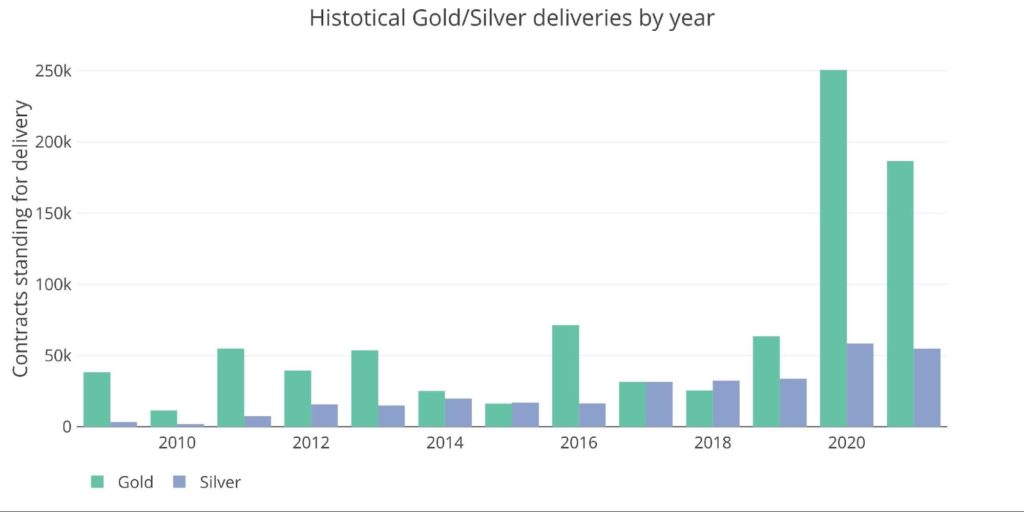
Figure: 1
Warehouse stock: Eligible vs Registered
Another data point to track and monitor is actual physical metal held by the Comex, known as stock data. Metal sits within the Comex system with a number of Holders. The stock is categorized as either Registered or Eligible. For Gold, there is a new category known as Pledged which appears to be another categorization of Registered. The metal has been pledged as collateral. For simplicity, outside of this report, Pledged will be bucketed under Registered.
Eligible essentially means that the metal is stored in Comex warehouses, and conforms to exchange standards. It is being stored in the Comex warehouse for a private party, but it is NOT available for delivery to contracts because it does not (yet) have a warrant. Registered metal means that the metal bar has a warrant registered and is fully available for delivery to longs who stand for bullion delivery. Eligible metal can become registered, and vice-versa.
More detail can be found here and here.
Below are charts that show the historical trend of total warehouse stock of gold and silver broken into Registered and Eligible. As can be seen, similar to delivery data, 2020 proved a pivotal year. As deliveries surged, the Comex warehouse stock surged. 2021 has been slightly different, although delivery volume has fallen off some, the warehouse stock has taken a 180-degree turn and has been declining in 2021.
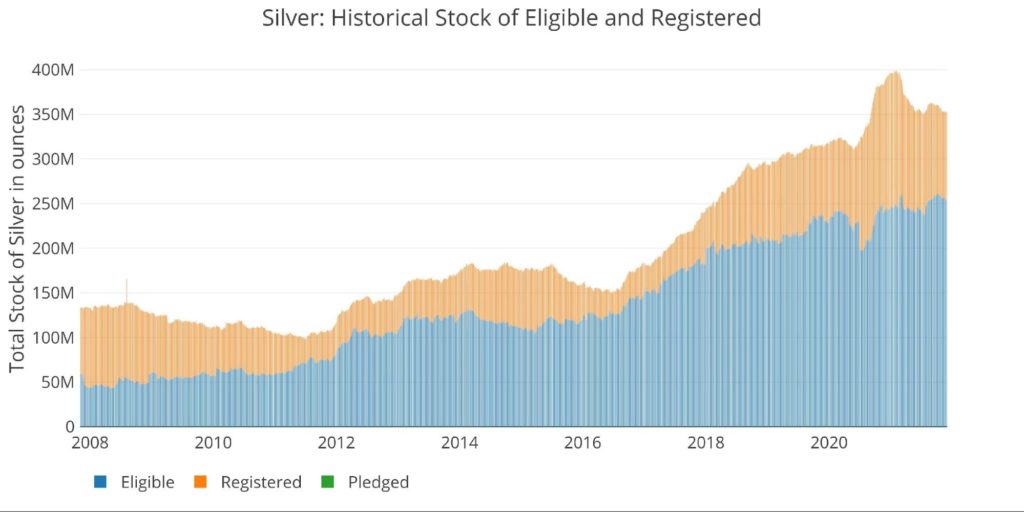
Figure: 2 Historical Eligible and Registered
Gold really saw a parabolic move in early 2020 when stress was put on the physical market. This caused CME to change its rules and allow more stock to come into the system.
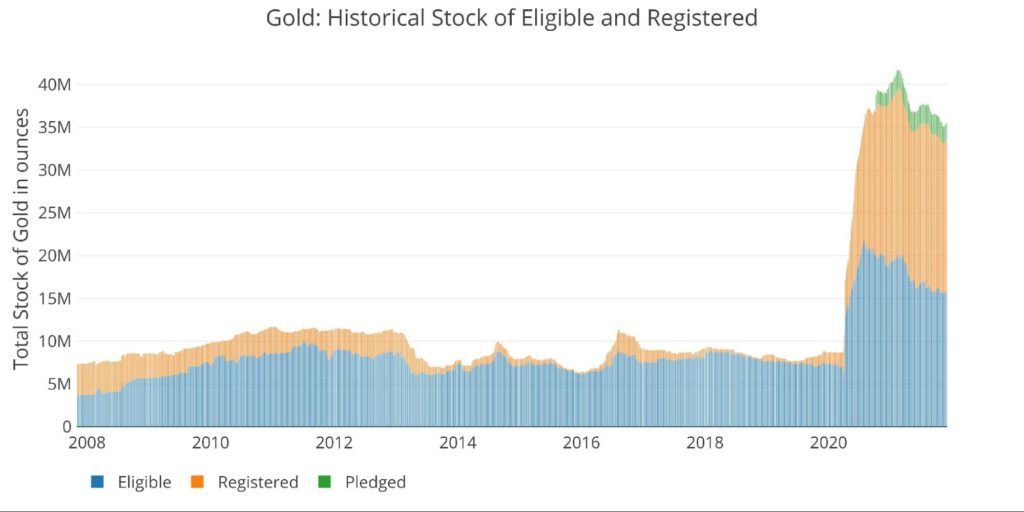
Figure: 3 Historical Eligible and Registered
Stock vs Deliveries
When a contract stands for Delivery, it is paired up with a short to “Deliver” the metal. One party “Issues” the metal to the “Stop” which gives the name to the daily Issues and Stops report. When this happens, the short transfers the ownership of the warrant on the Registered bar to the long holder.
Most of the time, contracts standing for delivery result in money moving around within the Comex system. While the Comex has steadily increased its stock in recent years, deliveries do not tie neatly to increased (to satisfy deliveries) or decreased (clients removing their metal from the Comex system) stock as the two charts below demonstrate.
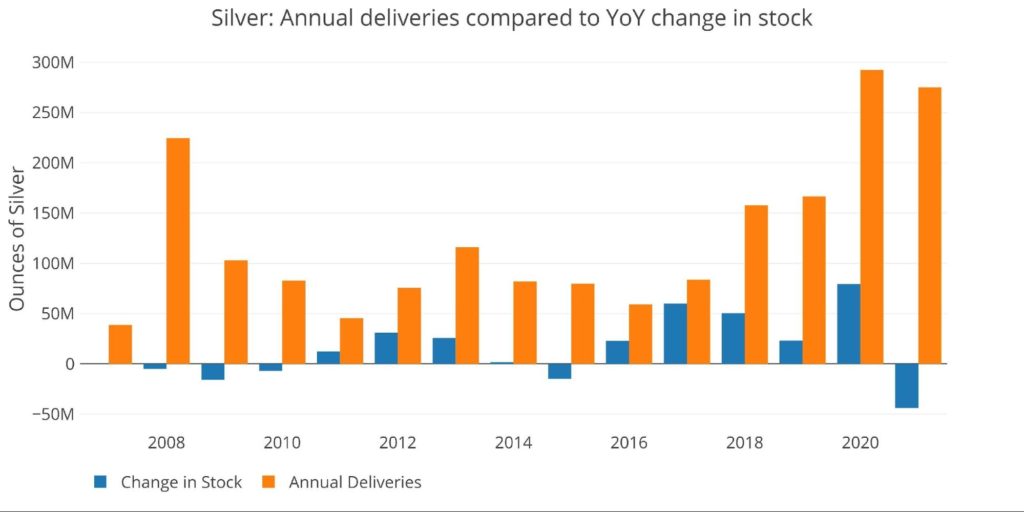
Figure: 4 Yearly Delivery and Stock Change
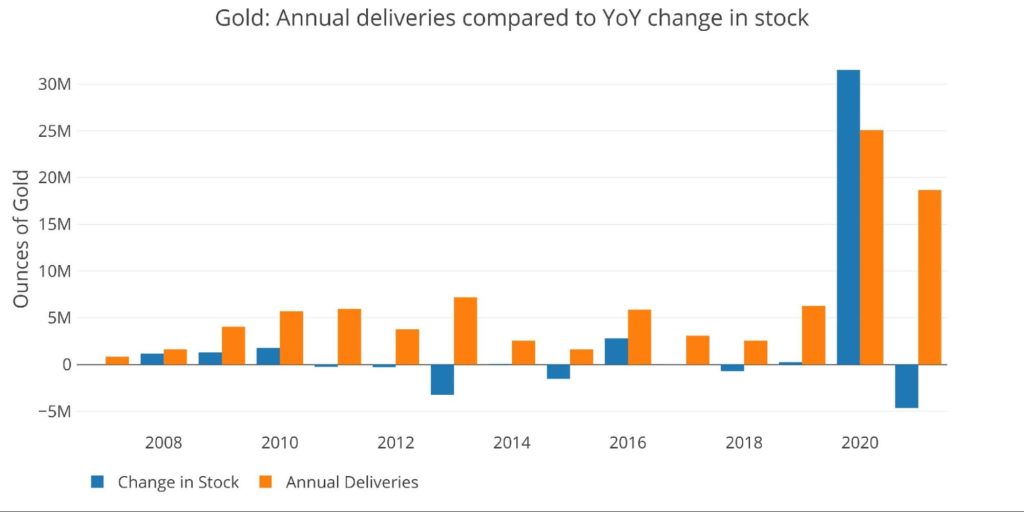
Figure: 5 Yearly Delivery and Stock Change
Thus, it is important to watch both Deliveries and movement of warehouse stock. Deliveries indicate parties wanting to take ownership of physical metal (making the metal Eligible) where stock shows metal entering and leaving the Comex system. In a true run on the system, deliveries would increase AND stock would decrease. This data will be analyzed in these reports at least once a month.
Major and Minor Months
One final important detail is the difference between major and minor months. Gold and Silver alternate major and minor months. Major months typically see total Open Interest (the number of contracts open) 100 times higher than minor months. While more contracts are typically delivered in major months, a much larger percentage of contracts stand for delivery in the minor months. There is far less volume in the minor months, so traders typically use the major months to gain exposure. Individuals specifically wanting delivery, do not care as much between the major and minor months.
Gold major months are Feb, April, June, Aug, Oct, and Dec. Silver major months are March, May, July, September, and December. January and November are minor months for both metals because they bookend December, which is a shared major month.
The data can be found on the Comex website, updated daily. Data in this article are as of 12/02/2021.

